above: Juvenile Great spotted woodpecker © Andrew Harrison
Leaders Jenny Vickers and Alvan White
A group of twelve met on a lovely morning by the delightful Woodlands St Katharine Church, set in some wonderful countryside between Frome and Longleat. It was built in 1714 by the Thynne family of Longleat ‘for the convenience of the parishioners’ who previously had to walk or ride all the way to Frome to find their parish church.
Before starting, a few of us looked around the churchyard and at the impressive ancient oaks nearby. Greenfinch and Nuthatch were heard and Holly Blue, Silver Washed Fritillary and Comma butterflies made their presence known. Helena Crouch’s friend Ben calculated an ancient Oak tree outside the churchyard was around 500 years old. Ben also pointed out at the base of the trunk the fungi Eiffel Tower bracket (Pseudoinonotus dryadeus).
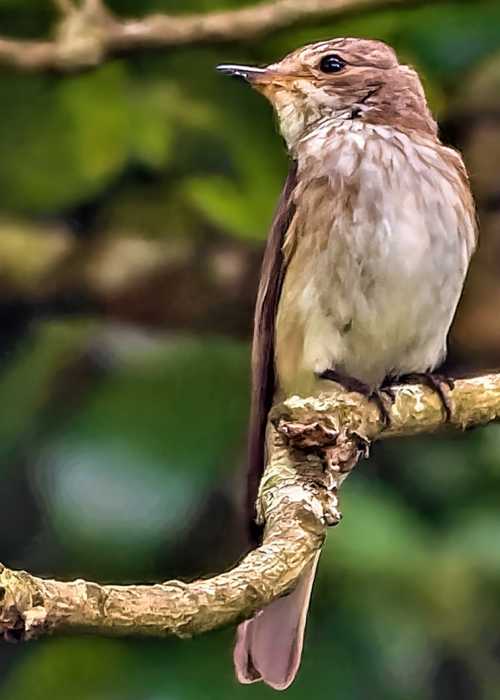
Spotted Flycatcher at East Woodlands © Mike Williams
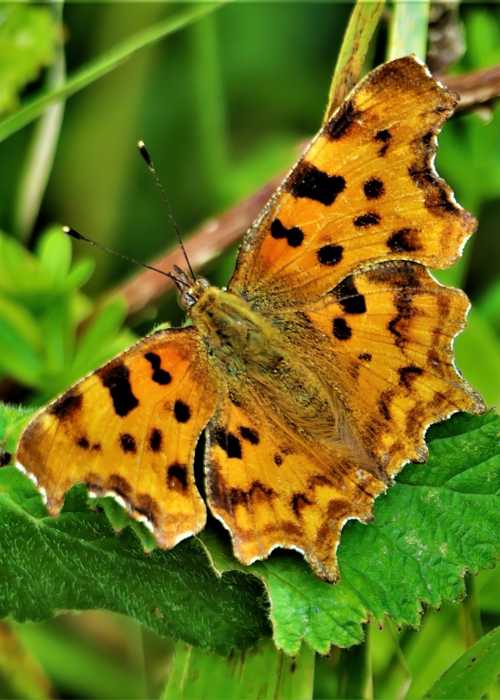
Comma at East Woodlands © Andrew Harrison
Lucy Starling soon found a Spotted Flycatcher on an oak. Within seconds she was reeling off a list of other birds as well as butterflies. It was becoming obvious this was a place to delight ornithologists, lepidopterists, entomophiles, botanists…,and photographers.
Early on our walk through the woodlands Alvan pointed out the very impressive Great Pied Hoverfly (Volucella pellucens). This black and white hoverfly hovers at around head height over paths on sunny days. The pale patches on its body at times seemed to be translucent.
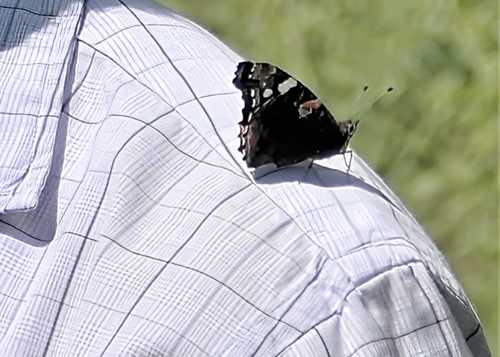
Red Admiral at East Woodlands © Andrew Harrison
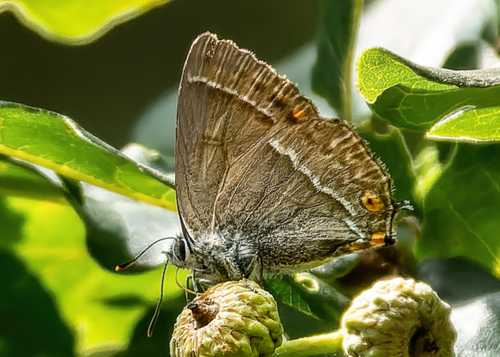
Purple Hairstreak © Mike Williams
Although we saw some spectacular butterflies, including briefly a Clouded Yellow (Colias croceus) as well as a Red Admiral (Vanessa atalanta) that rested on John Nissen’s left shoulder, probably the standout butterfly was the Purple Hairstreak (Favonius quercus). It was seen posing delightfully, often near acorns high up in a pedunculate oak tree (Quercus robur), one of its larval food plants.
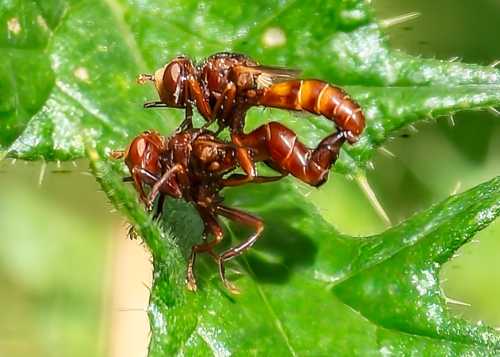
Ferruginious Bee-grabber © Mike Williams
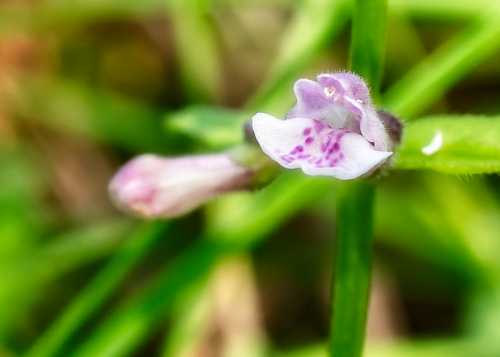
Lesser Skullcap © Mike Williams
Mike Williams noticed some Ferruginous Bee-grubbers, members of the Thick-headed fly group. Mike explained they will fly at bees and wasps, grab hold of them and implant eggs in the victim. Amongst the grasses soon afterwards Mike also discovered the Spotted Longhorn beetle (Rutpela maculata) then the Cinnamon Bug (Corizus hyoscyami). Both insects were distinctively marked. The former’s dark brown head and black and yellow body give it the look of a wasp. The latter is a very handsome. It is also referred to as the Black and Red Squash Bug. However, it can easily be confused with the unrelated Firebug (Pyrrhocoris apterus).
Before her departure Jenny Vickers introduced me to the eye-catching day flying Common Purple and Gold moth (Pyrausta purpuralis). Its larval food is the Mint plant.
Helena and her fellow botanists had a field day with findings like the Trailing Tormentil (Potentilla angelica), Creeping Cinquefoil (Potentilla reptans), Silverweed (Argentina anserina), and Betony (Stachys officinalis),. The botanical highlight of the day was the Lesser Skullcap (Scutellaria minor), a small, native perennial herb that grows in bogs, marshes, wet heaths and in damp acid woodland, mainly found in the south and south-west of England. It grows to around 25cm,and the flowers are up to 1cm, pale pink with dark pink to purple markings.
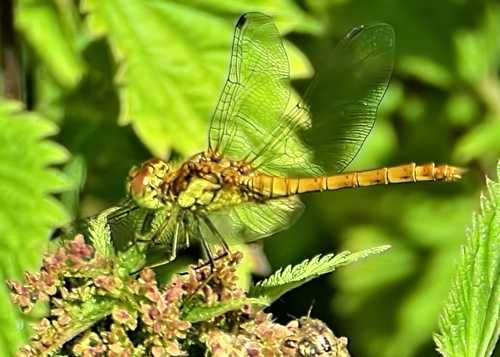
Common Darter at East Woodlands © Andrew Harrison
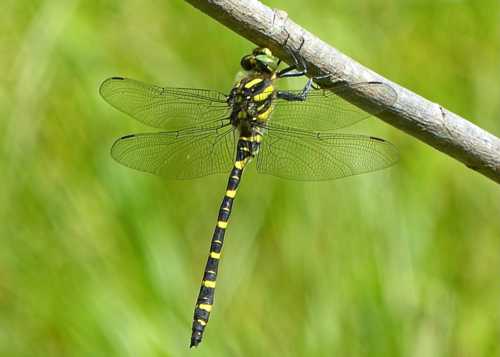
Golden-ringed Dragonfly © Phillip Delve
We encountered a number of very active dragonflies along the woodland rides including Emperor, Southern Hawker, Large Red Damselfly, and Common Darter. However, all were eclipsed when patience was rewarded with a sighting of the stunning Golden-ringed Dragonfly.
We saw and heard so much yet covered only a fraction of the area of the East Woodlands, which is well worth a visit.
Andrew Harrison


Recent Comments